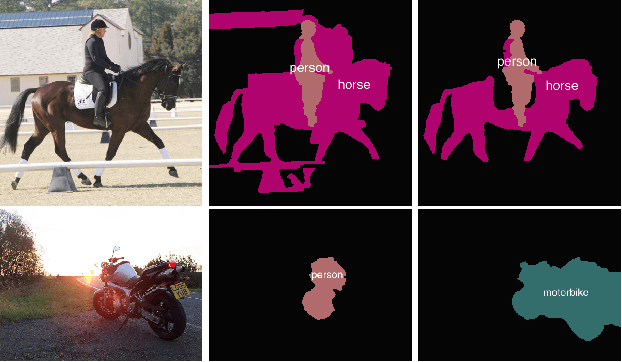Ferran Marqués
Color Deconvolution applied to Domain Adaptation in HER2 histopathological images
May 12, 2023



Abstract:Breast cancer early detection is crucial for improving patient outcomes. The Institut Catal\`a de la Salut (ICS) has launched the DigiPatICS project to develop and implement artificial intelligence algorithms to assist with the diagnosis of cancer. In this paper, we propose a new approach for facing the color normalization problem in HER2-stained histopathological images of breast cancer tissue, posed as an style transfer problem. We combine the Color Deconvolution technique with the Pix2Pix GAN network to present a novel approach to correct the color variations between different HER2 stain brands. Our approach focuses on maintaining the HER2 score of the cells in the transformed images, which is crucial for the HER2 analysis. Results demonstrate that our final model outperforms the state-of-the-art image style transfer methods in maintaining the cell classes in the transformed images and is as effective as them in generating realistic images.
Multiple Object Tracking from appearance by hierarchically clustering tracklets
Oct 07, 2022



Abstract:Current approaches in Multiple Object Tracking (MOT) rely on the spatio-temporal coherence between detections combined with object appearance to match objects from consecutive frames. In this work, we explore MOT using object appearances as the main source of association between objects in a video, using spatial and temporal priors as weighting factors. We form initial tracklets by leveraging on the idea that instances of an object that are close in time should be similar in appearance, and build the final object tracks by fusing the tracklets in a hierarchical fashion. We conduct extensive experiments that show the effectiveness of our method over three different MOT benchmarks, MOT17, MOT20, and DanceTrack, being competitive in MOT17 and MOT20 and establishing state-of-the-art results in DanceTrack.
Multiple Object Tracking with Mixture Density Networks for Trajectory Estimation
Jun 22, 2021



Abstract:Multiple object tracking faces several challenges that may be alleviated with trajectory information. Knowing the posterior locations of an object helps disambiguating and solving situations such as occlusions, re-identification, and identity switching. In this work, we show that trajectory estimation can become a key factor for tracking, and present TrajE, a trajectory estimator based on recurrent mixture density networks, as a generic module that can be added to existing object trackers. To provide several trajectory hypotheses, our method uses beam search. Also, relying on the same estimated trajectory, we propose to reconstruct a track after an occlusion occurs. We integrate TrajE into two state of the art tracking algorithms, CenterTrack [63] and Tracktor [3]. Their respective performances in the MOTChallenge 2017 test set are boosted 6.3 and 0.3 points in MOTA score, and 1.8 and 3.1 in IDF1, setting a new state of the art for the CenterTrack+TrajE configuration
Improving Spatial Codification in Semantic Segmentation
May 27, 2015



Abstract:This paper explores novel approaches for improving the spatial codification for the pooling of local descriptors to solve the semantic segmentation problem. We propose to partition the image into three regions for each object to be described: Figure, Border and Ground. This partition aims at minimizing the influence of the image context on the object description and vice versa by introducing an intermediate zone around the object contour. Furthermore, we also propose a richer visual descriptor of the object by applying a Spatial Pyramid over the Figure region. Two novel Spatial Pyramid configurations are explored: Cartesian-based and crown-based Spatial Pyramids. We test these approaches with state-of-the-art techniques and show that they improve the Figure-Ground based pooling in the Pascal VOC 2011 and 2012 semantic segmentation challenges.
 Add to Chrome
Add to Chrome Add to Firefox
Add to Firefox Add to Edge
Add to Edge